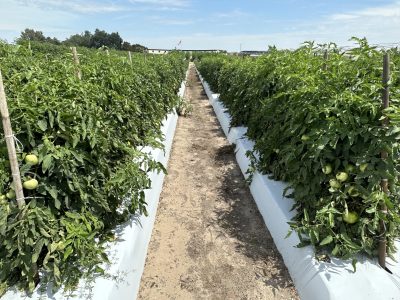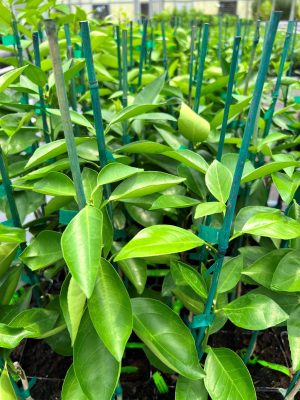
How Biologicals Support Transplant Crops
Why adding biologicals can give your transplants the boost they need to thrive.
Transplanting in agriculture is the act of establishing crop seedlings either indoors or outdoors in (a controlled environment), and then moving the plants into a field where they will finish growing and maturing. This practice offers young plants the best chance to thrive. Starting crops from transplants is used for a variety of reasons, including:
- Giving young plants a head-start on growing
- Ensuring uniform crop growth
- Establishing a strong root system before crops are placed out in the field
As some crop loss is inevitable, the goal of transplanting is to do all you can to support the maximum success in crop development. Agricultural biologicals are becoming a more widely-used tool and vital input to help support transplant crops in their growing and transitional phases. Today we’ll cover some of the key reasons for why that is.
This blog addresses:
- What crops are commonly transplanted and why?
- What common transplant issues are avoidable?
- How can agricultural biologicals support transplant crops?
What Crops are Commonly Transplanted and Why?

Tomatoes growing in Florida field
Some of the most commonly transplanted crops include tomatoes, berries, peppers, leafy greens, cucurbits, and perennials.
These crops, depending on the type, are typically planted either in early spring or late fall to avoid extreme heat or frost. It all depends on the specific conditions that are ideal for each specific crop.
There are several reasons why farmers choose to first establish the seedlings of certain crops, and then transplant them in the field when outdoor conditions are more favorable. A couple of these reasons include:
- Transplanting can help to avoid several of the problems associated with direct seeding by allowing plants to mature sooner and have an increased resistance to pests and other stressors.
- The practice of transplanting can also save on row space when the previous crops are still in harvest.
What Common Transplant Issues are Avoidable?
All plants have their own recipe of optimal conditions that will help them thrive, and transplants are no different. There are three main factors to keep in mind when planning and handling your transplant crops to avoid common issues:
- Choose a high-quality growing medium: The quality and quality control of the growing medium plays a major role in setting transplant crops up for success. Media can vary in their shelf life and sensitivity to different storage and handling conditions, so be sure to select a quality growing medium that has good moisture-holding capacity, drainage, and nutrient-retention capacity.
- Consider nutrient management: Fertilizer rate and application timing in transplant production can severely impact transplant crop quality and the ability to thrive in the field after planting. It’s crucial to establish a nutrient management plan that is tailored to temperature and light conditions.
- Plan out the crop schedule: Transplant timing is critical to ensure that crops aren’t being transplanted prematurely or too late. Transplanting too early will affect the crop’s root system and ability to adapt to environmental changes. Transplanting too late may result in crops suffering from bound roots or nutrient deficiencies.
It’s also necessary to “harden off” transplant crops, which means exposing them to slightly cooler and dryer conditions before transplanting. This will help prevent transplant shock—the stress crops experience when they’re moved directly to the field without being acclimated to their new environment.
Certain products can also be used to support the development of healthy transplants, giving them an extra boost to increase crop productivity and grower profits.
How Can Biologicals Support Transplant Crops?

Young citrus trees growing in a Florida nursery before being transplanted into the field.
Agricultural biologicals are proven to provide key benefits that will help transplants thrive, including increasing nutrient availability, enhancing plant vigor, and supporting root growth.
Three biological products from Locus AG—Rhizolizer Duo for Fruits-Vegetables, Rhizolizer Duo for Vineyards-Orchards, and Rhizolizer Duo WP for Berries-Melons—are especially helpful to transplants because they are:
- Easy to use and can be added through the drip line
- Compatible with other products on the market
- Safe for use around animals
- Shown to increase crop yield and grower ROI
These products can be applied at the time of transplanting, with additional follow-up applications.
Contact your local Locus AG rep for a rate and application schedule, or leave us a message below to learn more.
Want to learn how Locus AG vital biologicals can increase your yields and profits?
Fill out the form below and one of our agricultural experts will be in touch.



